As a passionate camper, I know how key it is to stay warm in the cold, especially without a fire. Finding other ways to stay warm is crucial for outdoor fun in the chilly. In this article, I’ll share top tips for camping without a fire. These include preparation, layering, and innovative methods to keep you cozy, no matter the weather.
Key Takeaways
- Preparation is vital for cold weather camping.
- Layering clothing helps retain body heat effectively.
- Choosing the right sleeping bag can significantly improve warmth.
- Insulation strategies are essential for tent warmth.
- Alternative heating solutions can enhance comfort.
Understanding Cold Weather Camping
Cold weather camping is a unique adventure, but it comes with challenges. The temperature drops a lot, and wind makes it feel colder. It’s important to watch the weather closely, as sudden changes can be dangerous.
Moisture is also a big factor. Wet clothes or gear can make you lose heat fast. This is why staying dry is key to staying warm.
Winter camping safety is a top priority. Hypothermia and frostbite are serious risks, especially if you don’t take the weather seriously. To stay safe, keep warm and dry. Choose a sheltered campsite and use good gear to protect yourself.
Knowing these things before you go can make your camping trip better. Being ready is the best way to enjoy the adventure safely and comfortably.
| Factors | Impact | Safety Measures |
|---|---|---|
| Temperature Drops | Rapid loss of body heat | Layer clothing and check weather |
| Wind Chill | Increases perceived cold | Choose a sheltered campsite |
| Moisture | Can lead to hypothermia | Use moisture-wicking materials |
How to Stay Warm While Camping Without a Fire
Camping in cold weather needs careful planning for warmth and comfort. I’ve learned that using the right techniques makes a big difference. The main strategies are about what you wear and how you sleep.
Layering Your Clothing for Maximum Warmth
Wearing layers is key when it’s cold outside. You need a base layer, an insulating layer, and an outer layer. Each layer helps keep you warm by trapping heat and keeping moisture away.
- Base Layer: Pick materials like merino wool or synthetic fabrics that draw moisture away and keep you warm.
- Insulating Layer: Fleece and down are great for keeping warm. I like wearing a fleece jacket or a down vest for extra comfort.
- Outer Layer: A waterproof and windproof jacket is essential. Look for ones with adjustable cuffs and hoods to keep you warmer.
Choosing the Right Insulation for Your Sleeping Bag
When picking a sleeping bag for cold weather, the insulation type and fill power matter a lot. Synthetic insulation works well in damp conditions, while down insulation is lighter and warmer. Here are some tips for choosing:
| Insulation Type | Temperature Rating | Weight |
|---|---|---|
| Synthetic | Comfortable down to 30°F | Heavier |
| Down | Comfortable down to 20°F | Lighter |
It’s smart to pick a sleeping bag that’s rated for colder temperatures than you expect. Good gear is important for staying comfortable while camping.
Essential Winter Camping Clothing
Choosing the right winter camping clothes is key to staying warm. The right materials and layers help me enjoy camping, even in cold weather. Here are some top picks for staying cozy on winter adventures.
Materials that Retain Heat
When picking winter camping clothes, the material matters a lot. I look for fabrics like:
- Wool: Known for keeping you dry and warm.
- Fleece: It’s warm, breathable, and great for mid-layers.
- Down: Light and insulating, perfect for jackets.
- Thermal Fabrics: They trap heat well, making them perfect for base layers.
This mix helps me stay warm, even when the weather changes.
Footwear Considerations for Cold Weather
Choosing the right shoes for cold weather is just as important. I choose shoes that keep my feet warm and comfortable. Here’s what I look for:
- Insulated Boots: I pick boots with good insulation to keep my feet warm.
- Waterproof Materials: Boots need to be waterproof to keep my feet dry.
- Thick Socks: I wear wool or synthetic socks for extra warmth and to control moisture.
- Traction: I choose shoes with good grip for slippery or snowy paths.
These features ensure I stay safe and comfortable in winter landscapes.
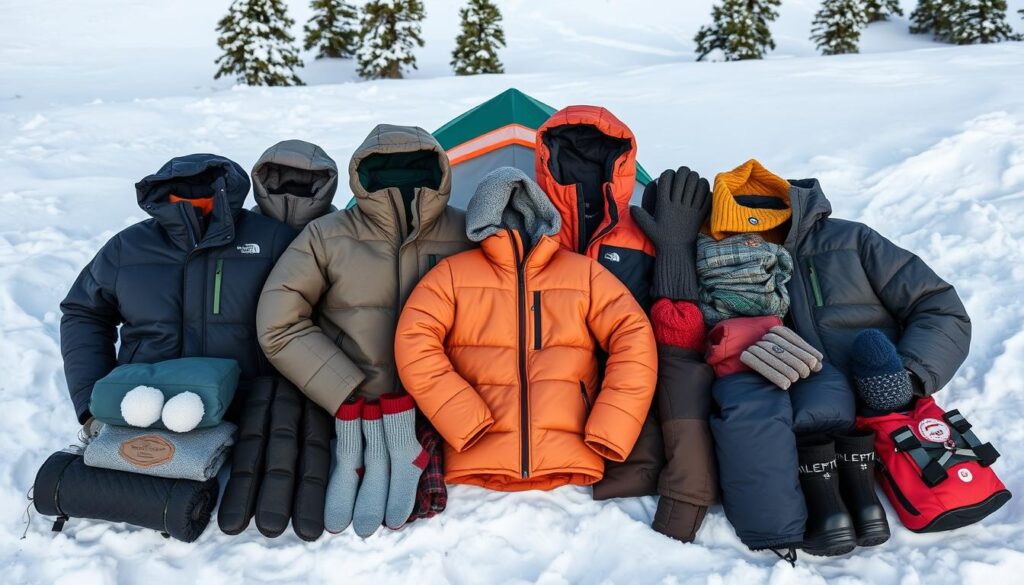
Choosing Weatherproof Camping Gear
When you plan a camping trip in the cold, picking the right gear is key. The right gear keeps you warm and dry. It makes your tent a cozy place to be.
A good tent is a must. It should be made of strong, insulated materials. Look for tents with weather-resistant coatings to keep out snow and rain. Features like reinforced seams and built-in ventilation make your stay more comfortable.
Don’t forget about extra tools like portable windbreaks and rain covers. They add extra protection against bad weather. This lets you enjoy your trip without worrying about the weather. Plus, gear made for cold weather camping makes your adventure more comfortable.
| Gear Type | Features | Benefits |
|---|---|---|
| Tents | Insulated, weather-resistant materials | Comfortable and dry shelter |
| Sleeping Bags | Cold-weather rated insulation | Warmth during cold nights |
| Windbreaks | Portable and easy to set up | Protection against wind chill |
| Rain Covers | Lightweight and compact | Shield against unexpected rain |
Insulation Strategies for Sleeping Comfort
When camping in cold weather, keeping warm is key for a good night’s sleep. Insulation for camping helps keep your tent and sleeping gear cozy. Here, we’ll look at important tent insulation tips and recommend cold weather sleeping bags for a better camping experience.
How to Properly Insulate Your Tent
Insulating your tent right can make it a warm spot on chilly nights. Start with quality sleeping pads or air mattresses. They act as a barrier against the cold ground. Here are some tent insulation tips:
- Use an insulating ground tarp under your tent.
- Place extra blankets inside to increase warmth.
- Seal any gaps or openings with fabric or tape to prevent drafts.
- Consider a tent footprint that adds an extra layer of insulation.
Sleeping Bag Options for Cold Weather
Choosing the right sleeping bag is vital in cold weather. High-quality cold weather sleeping bags keep you warm. Brands like The North Face and Therm-a-Rest offer great options for extreme cold. Here’s a quick look at some recommended sleeping bags:
| Brand | Model | Temperature Rating | Insulation Type |
|---|---|---|---|
| The North Face | Inferno 0 | 0°F | Down |
| Therm-a-Rest | Quasar 0 | 0°F | Synthetic |
| REI Co-op | Roadtripper 20 | 20°F | Down |
Using effective insulation can make your cold camping trip warm and fun. Follow these tips to improve your comfort and enjoy your outdoor adventures more.
Heat Retention Tips Inside Your Tent
Keeping warm in your tent is key for a great camping trip in cold weather. A few simple strategies can make a big difference. Using reflective blankets helps keep you warm. Also, it’s important to keep the air inside fresh by letting in a bit of ventilation.
Using Reflective Blankets for Added Warmth
Reflective blankets are great for keeping warm in your tent. They trap your body heat well. Here’s how to use them effectively:
- Put a reflective blanket under your sleeping bag for extra warmth.
- Hang a blanket inside your tent to reflect your body heat back to you.
- Use small blankets to cover cold spots, like the ground or tent walls.
Ventilation to Maintain a Cozy Environment
Good ventilation is crucial for staying warm and dry in your tent. It might seem odd to open vents in cold weather. But, it’s necessary for comfort. Here are some tips for ventilation:
- Open vents a bit to let out moist air without losing too much heat.
- Position your tent doors to block drafts but still let air in.
- Find the right balance between ventilation and warmth for the perfect cozy tent.
Staying Cozy Without a Fire
Camping in cold weather can be tough, but you can stay warm without a fire. Knowing about other ways to heat up makes camping better. Warm food and drinks also add to the cozy feeling. Here are some tips to keep you warm while enjoying the outdoors.
Alternative Heating Solutions for Campsites
There are many good ways to stay warm without a fire. These small, easy-to-carry options keep you cozy:
- Portable Butane Heaters: These are light, simple to use, and warm you up fast. You can adjust the heat to your liking.
- Heat Packs: Put them in your bag or clothes for warmth. They’re easy to heat up and take with you.
- Electric Blankets: If you can plug them in, electric blankets are a comfy way to stay warm at night.
Food and Drinks to Keep You Warm
Warm food and drinks make you feel good and warm. Here are some tasty ideas to keep you cozy:
- Hot Soups: They’re full of nutrients and warm you up. A thermos of soup is a treat for your taste buds and body.
- Herbal Teas: Herbal tea makes a cozy moment. Try chamomile or ginger for extra warmth.
- Oatmeal or Porridge: A hot bowl of oatmeal starts your day right. It keeps you warm and gives you energy for your adventures.
| Heating Solution | Advantages | Considerations |
|---|---|---|
| Portable Butane Heaters | Quick warmth, adjustable heat | Needs careful usage, fuel considerations |
| Heat Packs | Compact, reusable options | Limited duration of heat |
| Electric Blankets | Comforting warmth throughout the night | Requires electricity, heavier to carry |
| Hot Soups | Nourishing and warming | Requires preparation before the trip |
| Herbal Teas | Relaxing, can be made easily | Variety may be limited |
Cold Weather Camping Hacks
Cold weather camping is exciting, but staying warm is key. I’ve found some great hacks to keep me cozy. One trick I love is using two sleeping bags. This traps more heat, making a big difference on cold nights.
Hand warmers are also a must-have. They give off instant heat and can be tucked away in pockets or gloves. On really cold nights, I put them in my sleeping bag to stay warm from the start.
Thermal bottles have changed how I stay hydrated in winter. They keep my drinks hot, so I can enjoy a warm drink anytime. This keeps me comfortable and hydrated, which is important in cold weather.
Finally, using emergency blankets adds extra insulation. I put them under my tent for warmth against the cold ground. These tips for winter camping make my trips much more fun and cozy.
| Hack | Description | Benefits |
|---|---|---|
| Layered Sleeping Bags | Using two sleeping bags to trap heat. | Increased warmth during chilly nights. |
| Hand Warmers | Pockets of heat that can be placed anywhere. | Instant warmth at your fingertips. |
| Thermal Bottles | Insulated bottles to keep drinks hot. | Encourages hydration and provides comfort. |
| Emergency Blankets | Extra insulation under the tent. | Helps retain heat from the cold ground. |
Preparing for Unexpected Weather Changes
Camping in changing weather can be an adventure, but it can also turn into a challenge. To stay ready, I always keep an eye on the weather forecast. I check for updates as my trip gets closer and while I’m camping. This helps me prepare for any sudden weather changes.
Being able to adapt to the weather is key. A sudden cold drop or an unexpected rainstorm can affect my comfort and safety. I have backup plans, like knowing alternative camping spots. This gives me peace of mind if the weather forecast changes a lot.
Preparing my gear for emergencies is important. I carry extra items like waterproof tarps, extra clothes, and quick-dry blankets. These items help me stay comfortable and safe, even when the weather surprises me. These simple steps make my camping trips better and reduce stress.
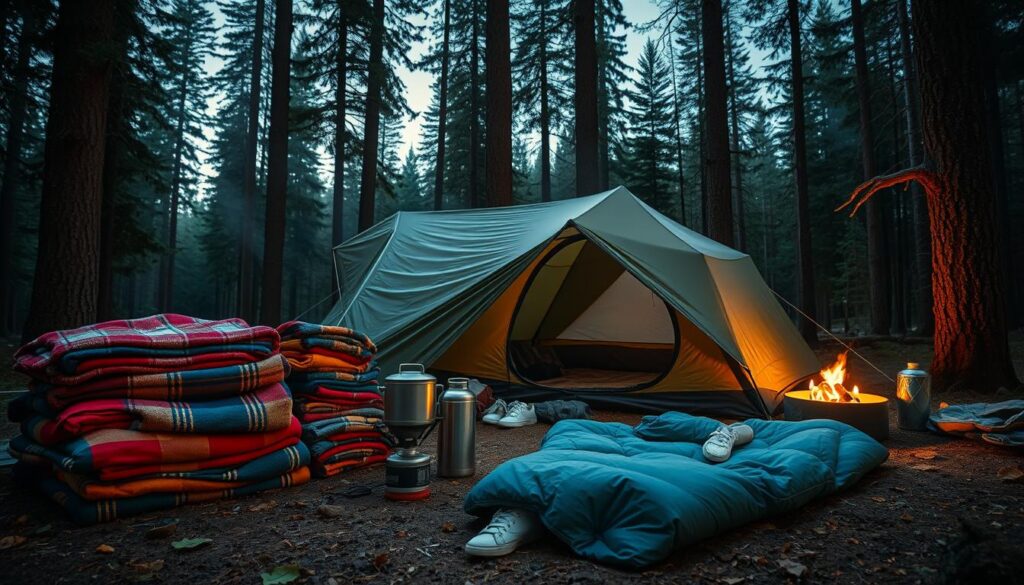
| Preparedness Strategies | Benefits |
|---|---|
| Continuous weather monitoring | Stay informed about changes |
| Alternative camping sites | Flexibility to adapt quickly |
| Emergency gear packs | Enhanced safety and comfort |
| Extra layers of clothing | Protection against sudden cold |
| Waterproof coverings | Defense against unexpected rain |
Benefits of Camping in the Winter
Winter camping has many benefits that people often miss. Being in nature during the quiet season is very peaceful. The snow-covered landscapes offer a calm view, unlike the busy summer months.
Winter camping lets you try activities like snowshoeing and ice fishing. These activities add fun to your winter trips. They also help you stay active and connect with nature.
Winter camps are less crowded, making them more personal. You can think deeply and be creative in these quiet places. Exploring these areas can reveal hidden natural wonders.
The benefits of winter camping go beyond the views. The cold air makes you feel alive and challenges you. It’s a chance to grow stronger and appreciate nature more.
Conclusion
Winter camping can be rewarding with the right approach. I’ve shared key tips, like layering and choosing the right gear. These help keep you warm on cold nights.
It’s not just about gear; it’s also about your mindset. Seeing winter’s beauty with the right knowledge makes it cozy. I encourage you to explore the cold wilderness with confidence.
Having a good plan and warm camping tips is crucial. These strategies help you enjoy winter landscapes without losing comfort or safety.

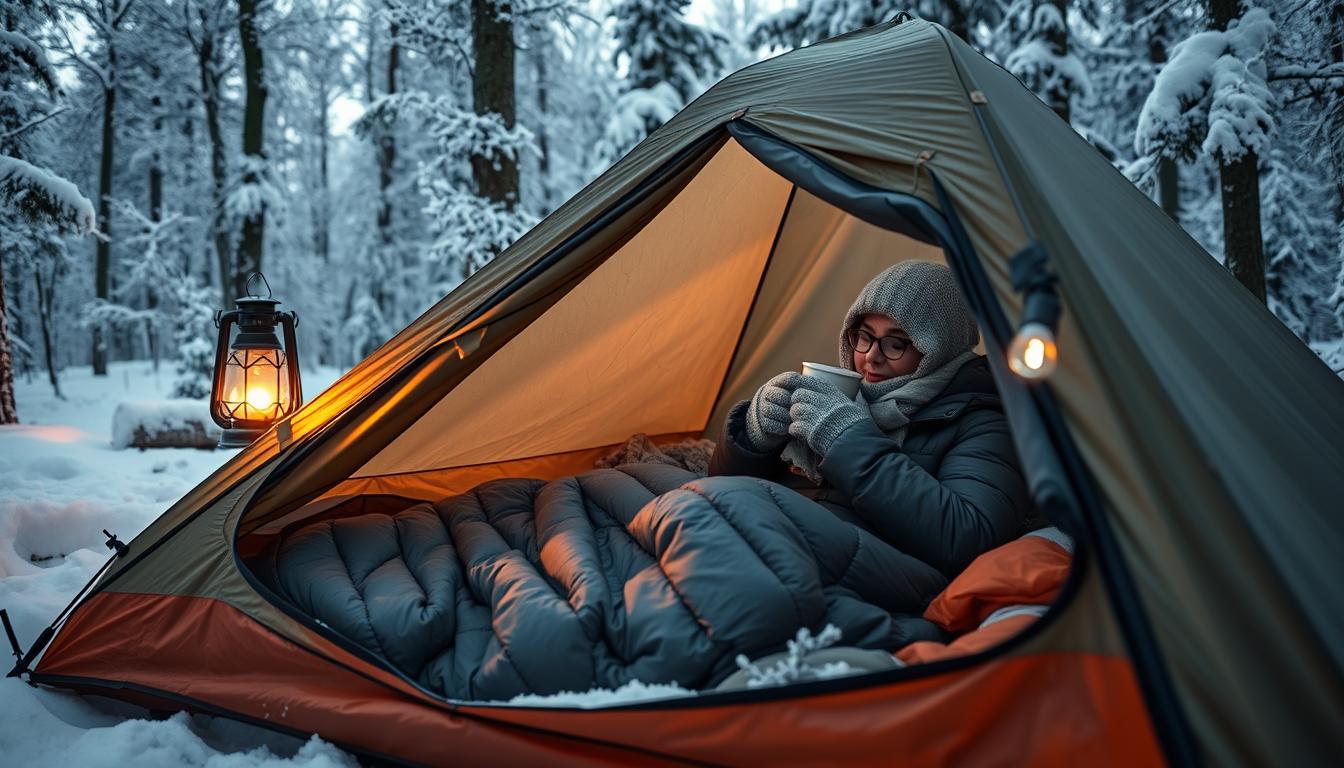

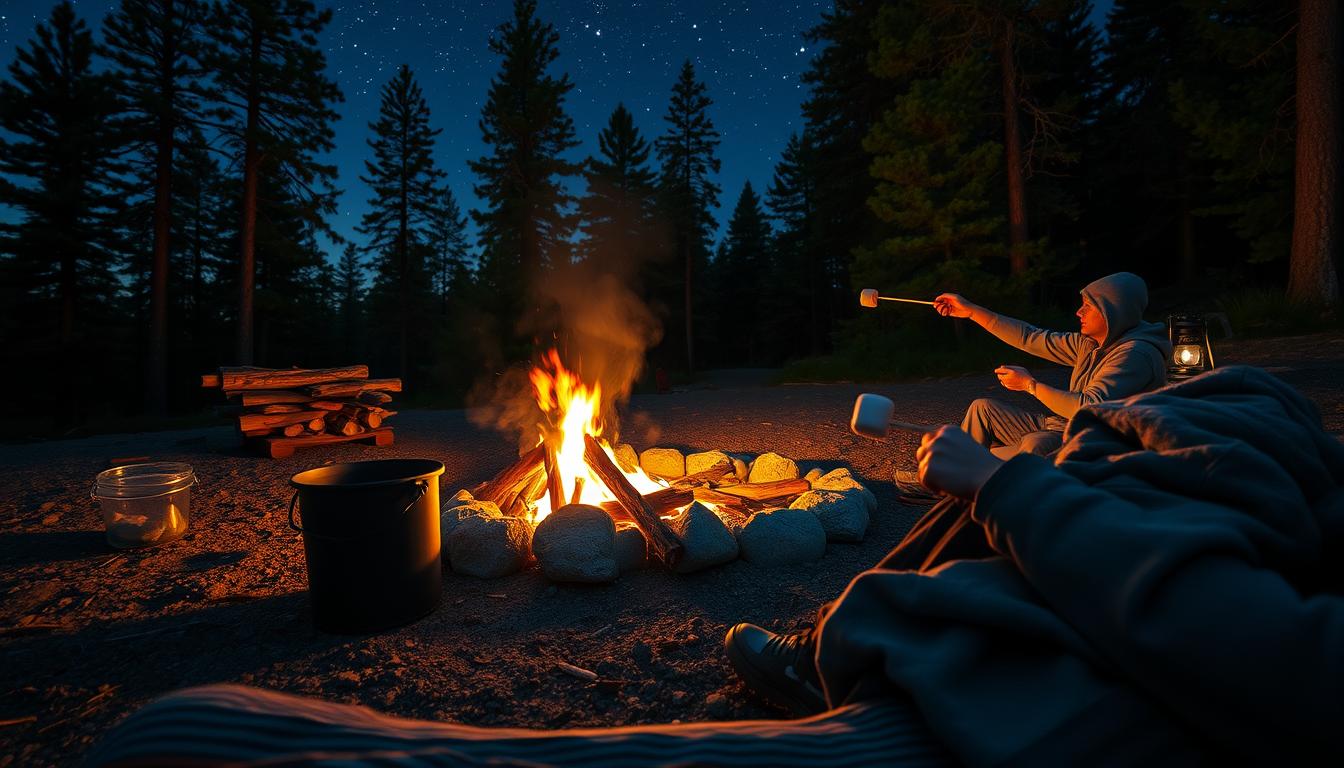
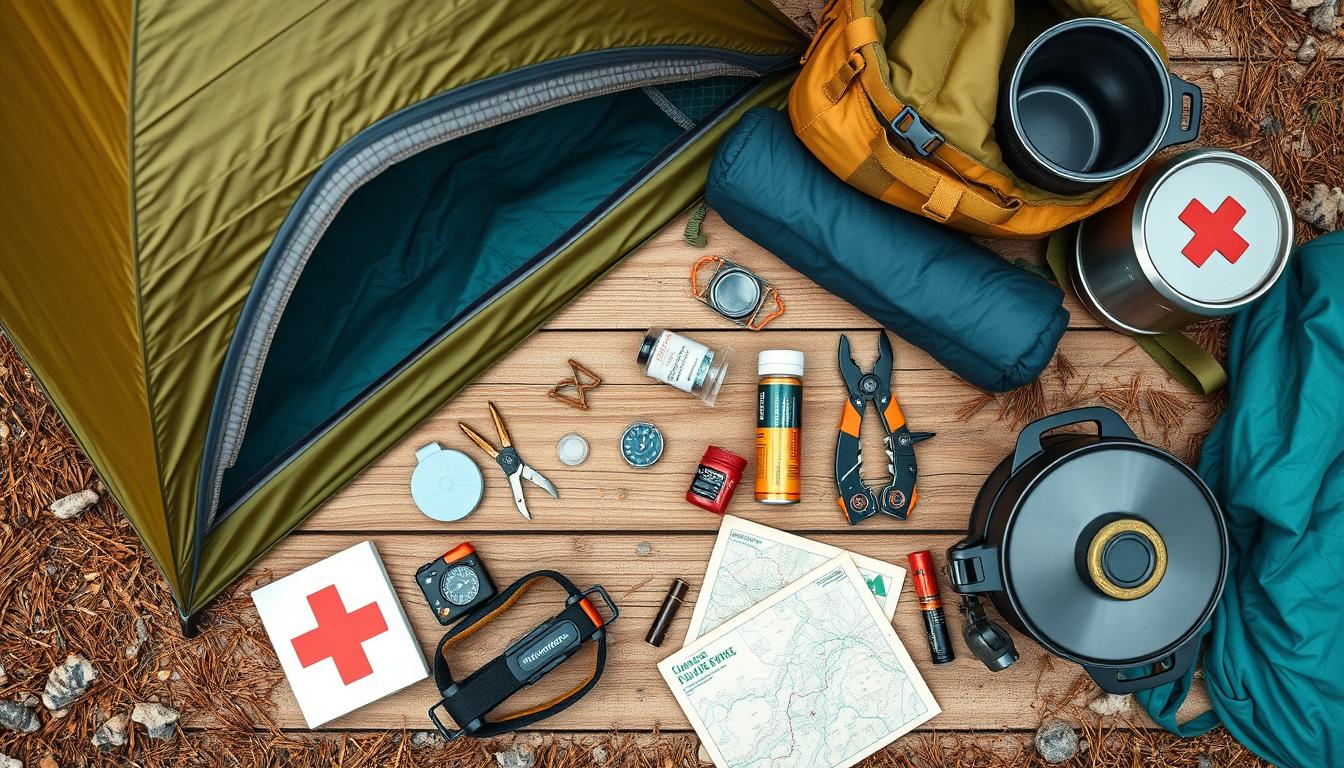
Leave a Reply